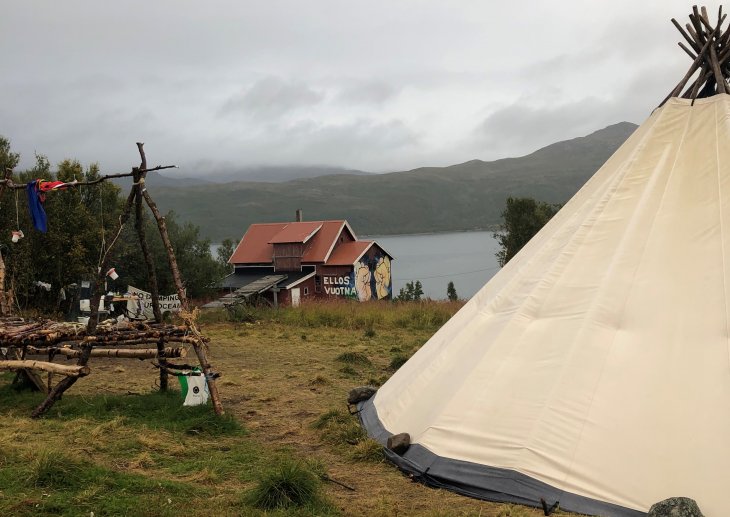The energy transition and ‘green’ technologies spark enormous demands for minerals. Norway set out to become a supplier of raw materials which, in the current geopolitical tensions, are much needed not only by the country itself but also the European Union.

Activist camp at Repparfjord. Photo taken in 2021 by Zane Datava
In late June 2023, the Norwegian government’s Ministry of Trade, Industry and Fisheries unveiled its ambitious mineral strategy.
Aiming to make Norway a leading mining nation in Europe, the government does not only want to have more extractive projects but also mainly prioritises critical minerals for which exploration permits should be granted much quicker. This seems in line with the national energy commission’s pledge ‘more of everything, faster’. At the same time, the Norwegian mining sector should also become the world’s most sustainable.
Considering the expansive and destructive nature of mining, to get more extraction go along with less harmful impacts, indigenous rights as well as nature and biodiversity preservation is a difficult task, as earlier mining projects showed. Repparfjord, where Nussir plans to open a copper mine, has been a controversial mining project in Sami territories. The project is probably one of Norway’s most debated mining projects in recent decades. Did the government learn from the Repparfjord case?
One of the authors (Zane) spent a couple of weeks in the summer in the activist camp against the development of the copper mine in Repparfjord two years ago. Participation in the everyday activities of the camp revealed how and why the planned mining site would influence life along the fjord.
Reindeer herders, fishermen, cabin owners, and neighbours joined the activists and shared their opinions. Young people hearing their grandparent’s stories about the Alta protests in the 1970s and 1980s against the building of a hydroelectric power plant, and the consequent damages, were now participating in demonstrations against the construction of Nussir’s copper mine. One of the main controversies were the planned dumping of mining tailings into the fjord which in the eyes of the activists would have devastating environmental impacts.
The overwhelming feeling was that the people in Northern Norway had been overlooked, and their rights had been abused once again. The historical connection to the land and lifestyles depending on that land and water, like reindeer herding and fishing, were threatened by the interruption of the mining industry. The activists suggested a different scenario from the expansion, economic growth or the need for more minerals for the “green shift” – they introduced ideas of de-growth and consuming less instead of producing more.
The conflict in Repparfjord remains unresolved as the protests have temporarily halted the mining project. This has led to the resignation of some of the main investors and brought to light the issue of missing documentation.
The mineral strategy highlights social, environmental, and economic sustainability. The government seems to have learnt from past conflicts and specifically addresses the rights of indigenous Sami people that might become affected by mining activities. However, the question of how Norway in practices would emerge as a prominent mining nation remains open: Can fast-track procedures ensure open dialogues and consultation with local communities democratically and justly? And without compromising on the priorisation of critical minerals, how could mining expansion take place without continuing the difficult legacies felt by the Repparfjord activists?
- Zane Datava is a PhD candidate at NTNU
- Anna-Sophie Hobi is a PhD candidate at NMBU, and a member of the Green Curses project